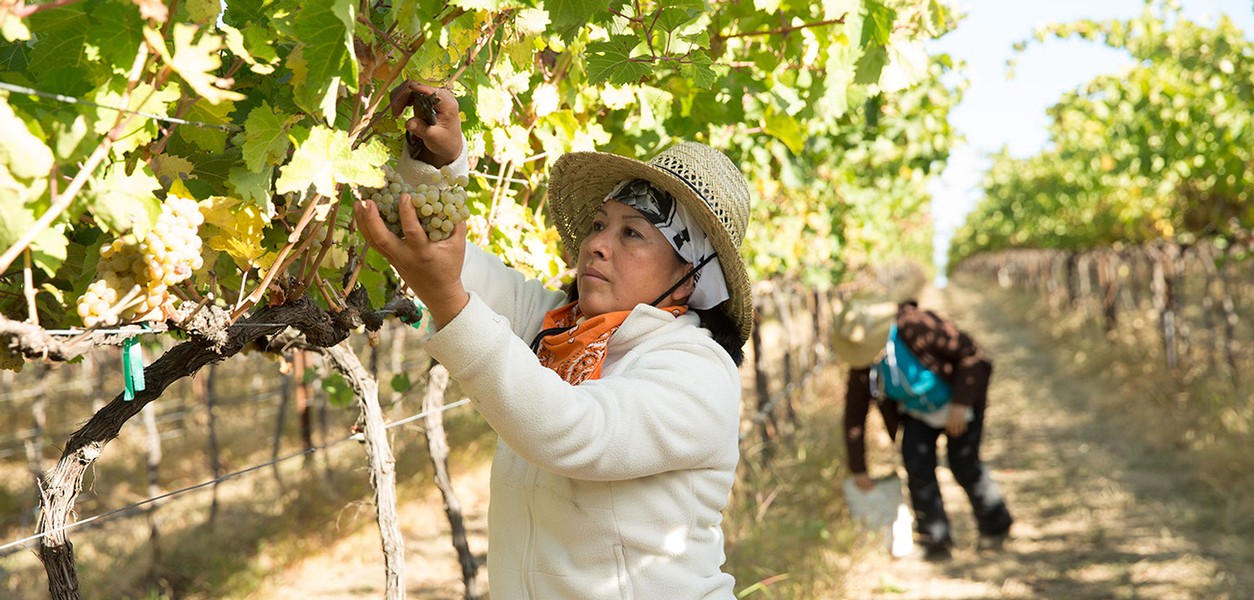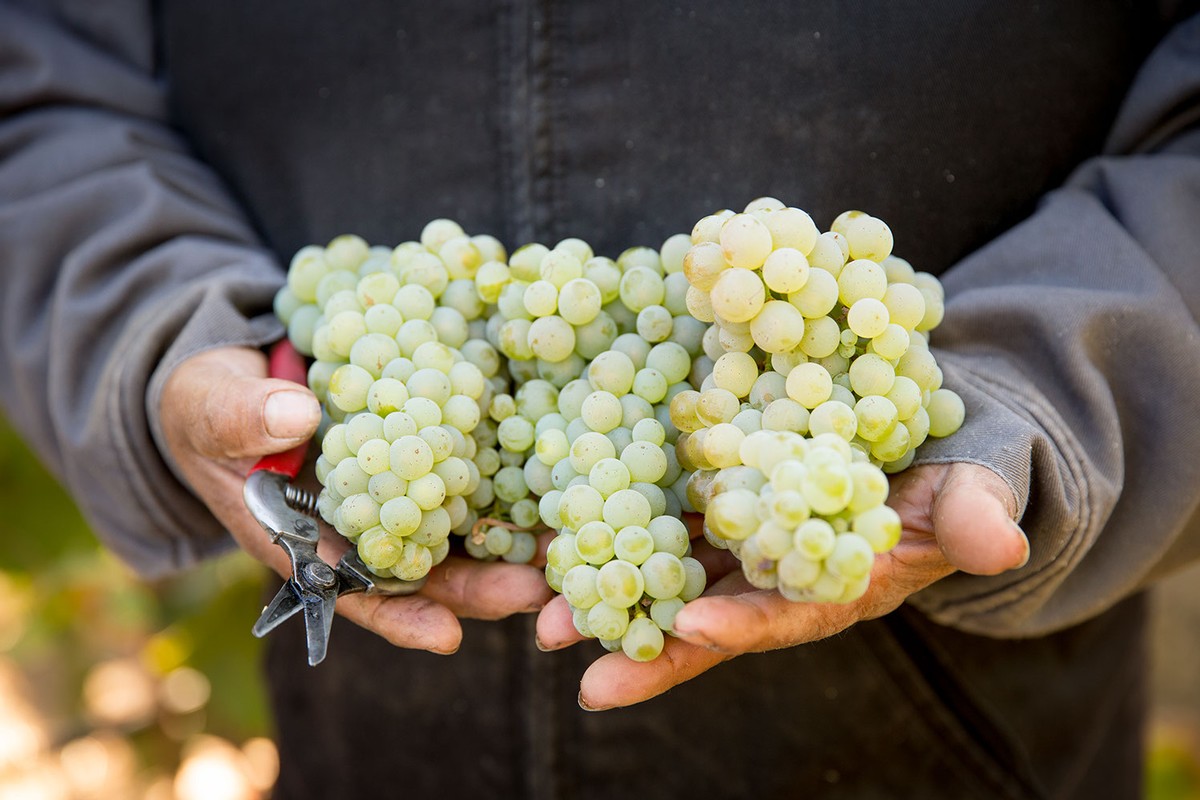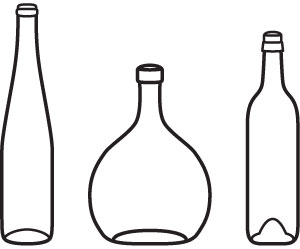How to decide when it is time to harvest after a warm vintage
Hand harvesting Riesling from Wallula Vineyard. Picking at the right time is one of the most important winemaking decisions. The final quality of a wine can often be directly linked to the picking decision.

For example an early picked Riesling will have flavors of green apple with low potential alcohol and high acidity, which is often perfect for a sparkling wine that has to be refermented to acquire its carbonation.
On the other end of the spectrum, very late picks can have tropical fruit flavors, very high sugar and sometime can be infected by Botrytis aka: Noble Rot. Picking later in the season is more appropriate for sweeter styles or complex bold dry styles such as an Alsatian Vendange Tardive wine.
Every winemaker needs to precisely time his or her picking decisions with the end product in mind. All would be beautiful if every growing season would be the same; that would allow producers to quickly learn the cause and effect of their picking decision.
But alas, Mother Nature chooses to randomize the weather every year. I guess I find solace in the fact that changing ripening conditions force winemakers to use their best judgment and reflect on their craftmanship.
There are countless vintages where producers can be sorted between the ones that picked before or after the rain, or the frost, or the heat spell. We can only hope to make the right picking call often and amass a high batting average.
2014 had all the hallmarks of a hot vintage: early bud break, early bloom (3 weeks ahead of average), early veraison, hot summer, early harvest (earliest of the last 17 harvests I have been part of in Washington).
This year is a vintage similar to 2014, 2003 and 1998. The fruit we are receiving is following the pattern of a warm vintage as well with lowish acidity (especially low malic acid), high sugar levels, low flavor development and high levels of phenolic content.
I have also seen some berry dehydration that seems correlated with lignified stems which I suspect comes from a dysfunctional xylem and hot conditions. However, the dehydration is pushing sugar even higher and is concentrating acidity reversing some of the lower acidity that we should see in a hot vintage.
All this makes the picking decision very tricky: should one pick early when the acidity is good, the potential alcohol is normal but the flavors are low? Should one wait and pick when the flavors are developed but then the acidity is gone and the sugar is sky high?
Or should one wait until raisining occurs with concentrated flavors, high acid but insanely high sugar? No matter the decision, the juice will have to be corrected and I hate to correct juices.
So here at Pacific Rim, we have opted to broaden the picking window to bring all those different ripeness levels in house and use blending to rebalance our lots.
An early pick with high acid and low flavors blended with a late pick with lots of flavors but no acid... you get the idea. This is used quite often, even at small estates, and is called fractional harvesting.
One can do this at the parcel level doing several passes or one can do it on a large scale with different parcels. I think this is brilliant winemaking because it minimizes corrections and tries to work with the vintage.
It also allows for smoother logistics at the winery; if we were to wait until the first lot is perfectly ripe we would not be able to keep up with all the grapes ripening at the same time and invariably, the later grape loads would be way over ripe.
So here we are at 30% of our harvest done with a large amount of what most wineries would consider a sparkling base (high acid, low sugar, low flavor) and starting into our second pick of Riesling which would usually fit the bill for Sweet Riesling.
For us hot vintage equals fractional picking and a wide range of lots for blending later.

Vin de Glacière Riesling - 96 Points!
The Vin de Glacière is lovingly referred to as the Ice Monster at the winery.[/caption] Our 2016 Vin de Glacière Riesling, affectionately named VDG aka the “ice monster,” pulled another great showing at the Canberra Riesling Challenge, one of the toughest Riesling-only competitions on the planet (or at least Planet Riesling).
The Aussies gave it an elite gold medal and a 96 point score. 96 points! that makes the VDG one of the highest scoring Riesling of the entire competition and this competition covers the world of Riesling.
This is great news and another fantastic award for our VDG that is accustomed to great scores from major American wine publications (Wine Spectator, Wine & Sprit or Wine Enthusiast): 2014 92 points, 2012 92 points, 2011 90 points. If you have never heard of the VDG, it is a sweet Riesling wine made through a process called cryo-extraction.
Cryo-extraction is the technique used to make ice wine. When we make the VDG, we handpick every cluster and then store them in cold storage. The difference with ice wines (which have been made for over 200 years – before we had freeze storage) is that ice wine uses Mother Nature to get the freezing done.
The concentration process is fairly simple: when a grape gets frozen, the water freezes first and the sugar last – this is reversed when the grapes are thawed. If you follow me, when you thaw the grapes while pressing, you end up extracting all the sugar first, leaving the water frozen in the press thus concentrating the juice.
There are several advantages to artificially freezing grapes versus waiting for Mother Nature to cooperate. Firstly, making ice wine is a bit like playing Russian roulette; some years you get a good frost, some you don’t and other years, you lose half the crop to birds before the frost.
The loss due to no freezing temperatures, rot or bird predation is not trivial, for example we make a true ice wine on average every four years and lose the crop the other three. Secondly, artificial freezing is predictable and relatively easy: no need to get up at midnight on Christmas day (though making a “Christwein” is somewhat romantic at first glance).
Predictability allows us to get a known yield every year, which is reflected in the price (our VDG sells for $14 versus $59+ for a true ice wine). Thirdly, the chemistry is different for cryo-extracted wines made from early frozen fruit: the wines is a bit tarter (picked earlier) making it more refreshing and it is less “funky” (no botrytis).
We love sipping and crafting both styles and each has a reason to be stored in your cellar. I would say that the VDG is a perfect every day sipper for the price and ice wine should be reserved to special occasions.
We’ve made our first VDG in 1986 making it the first artificially cryo-extracted wine made in the USA –this is a heritage that we are very proud of.
The VDG has allowed us to make a reasonably priced dessert-sweet Riesling that completes our range of classic Riesling styles which covers the entire sweetness scale: Dry, Riesling J (medium Dry), Sweet Riesling (medium Sweet) and Vin de Glacière (Sweet). Being well acquainted with all four styles is necessary for Riesling Enthusiasts/geeks.
There are many great pairings with the VDG; the classic parings would include blue cheese, foie gras or a fruit tart. Because of its lowish alcohol content (~9% ABV) and high acidity, it is a bright, refreshing dessert style that lifts the palate and that is not cloying.
The VDG is also a good companion in cocktails by adding more depth and more mellow sweetness than a simple sugar mixture. Regardless there are few wines that bring as much quality for the money than the Vin de Glacière.
There is no reasons not to stock up on VDG 2016 for the holidays: great price, one of the best Riesling in the world, perfect with pumpkin pie/Christmas dessert/friends and family, fantastic new ice dragon package!
Origin of the Term “Hock”
 Hock is the shortened form for the now obsolete word Hochheimer, after the German town of Hochheim that pioneered the use of the tall, slender bottle. The town’s name and its successful wines provided the inspiration for the name of the bottle shape. The term was certainly in use in Shakespeare’s day, as “hock” was a beverage loved o’erwell by Falstaff. In addition to the hock bottle, other bottle shapes used for Riesling are featured above, namely the bocksbeutel, traditional in Franken, and the claret, popular in the new world.
Hock is the shortened form for the now obsolete word Hochheimer, after the German town of Hochheim that pioneered the use of the tall, slender bottle. The town’s name and its successful wines provided the inspiration for the name of the bottle shape. The term was certainly in use in Shakespeare’s day, as “hock” was a beverage loved o’erwell by Falstaff. In addition to the hock bottle, other bottle shapes used for Riesling are featured above, namely the bocksbeutel, traditional in Franken, and the claret, popular in the new world.
The Riesling Growing Cycle

- Late Budding Grape Variety (about five days after Chasselas)
- Late Ripener (ripens three weeks after Chasselas)
- Very Cold Hardy Vine
- Highly Resistant to Disease & Wet Conditions
German Riesling Harvest Categories
ATTENTION WINE GEEK ALERT: The following section is intended for those wine geeks who are already well beyond the pale. Deliberate ingestion of the following contents may well render one unfit for further “normal” healthy social intercourse.
Must weights given in Oechsle & Brix
| LIGHT-BODIED KABINETT Minimum Must Weight by Region 70 Oe. or 17.0 Bx - Msr, N 73 Oe. or 17.7 Bx - P, Rg, Rh 76 Oe. or 18.4 Bx - F | DRY (Trocken) Kabinett Dry Weight : Light Max alcohol 9–10.5% Avg alcohol 8.5–10.2% |
| MEDIUM-BODIED SPÄTLESE Minimum Must Weight by Region 76 Oe. or 18.4 Bx - Msr 78 Oe. or 18.8 Bx - N 85 Oe. or 20.4 Bx - Rg, Rh, P 90 Oe. or 21.5 Bx - F | SPÄTLESE DRY Weight : Medium Max alcohol 10.5–12.5% Avg alcohol 10–12.2% (no Botrytis) |
| MEDIUM-HEAVY BODIED AUSLESE Minimum Must Weight by Region 83 Oe. or 19.9 Bx - Msr 85 Oe. or 20.4 Bx - N 92 Oe. or 21.9 Bx - P, Rh 95 Oe. or 22.6 Bx - Rg 100 Oe. or 23.6 Bx - F | AUSLESE DRY Weight : Medium to Heavy Max alcohol 11.5–14% Avg alcohol 10.7–13.7% (no Botrytis) |
| MEDIUM-DRY (Halbtrocken) KABINETT MED-DRY Weight : Light Max alcohol 9–10.5% Avg alcohol 8–9.5% | SWEET (Not Designated) KABINETT SWEET Weight : Light Max alcohol 9–10.5% Avg alcohol 7.2–8.5% |
| SPÄTLESE MED-DRY Weight : Medium Max alcohol 10.5–12.5% Avg alcohol 9.5–11.7% | SPÄTLESE SWEET Weight : Medium Max alcohol 10.5–12.5% Avg alcohol 7.7–9.7% |
| AUSELESE MED-DRY Weight : Medium to Heavy Max alcohol 11.5–14% Avg alcohol 10.3–13.1% | AUSLESE SWEET Weight : Medium to Heavy Max alcohol 11.5–14% Avg alcohol 8–10.8% |